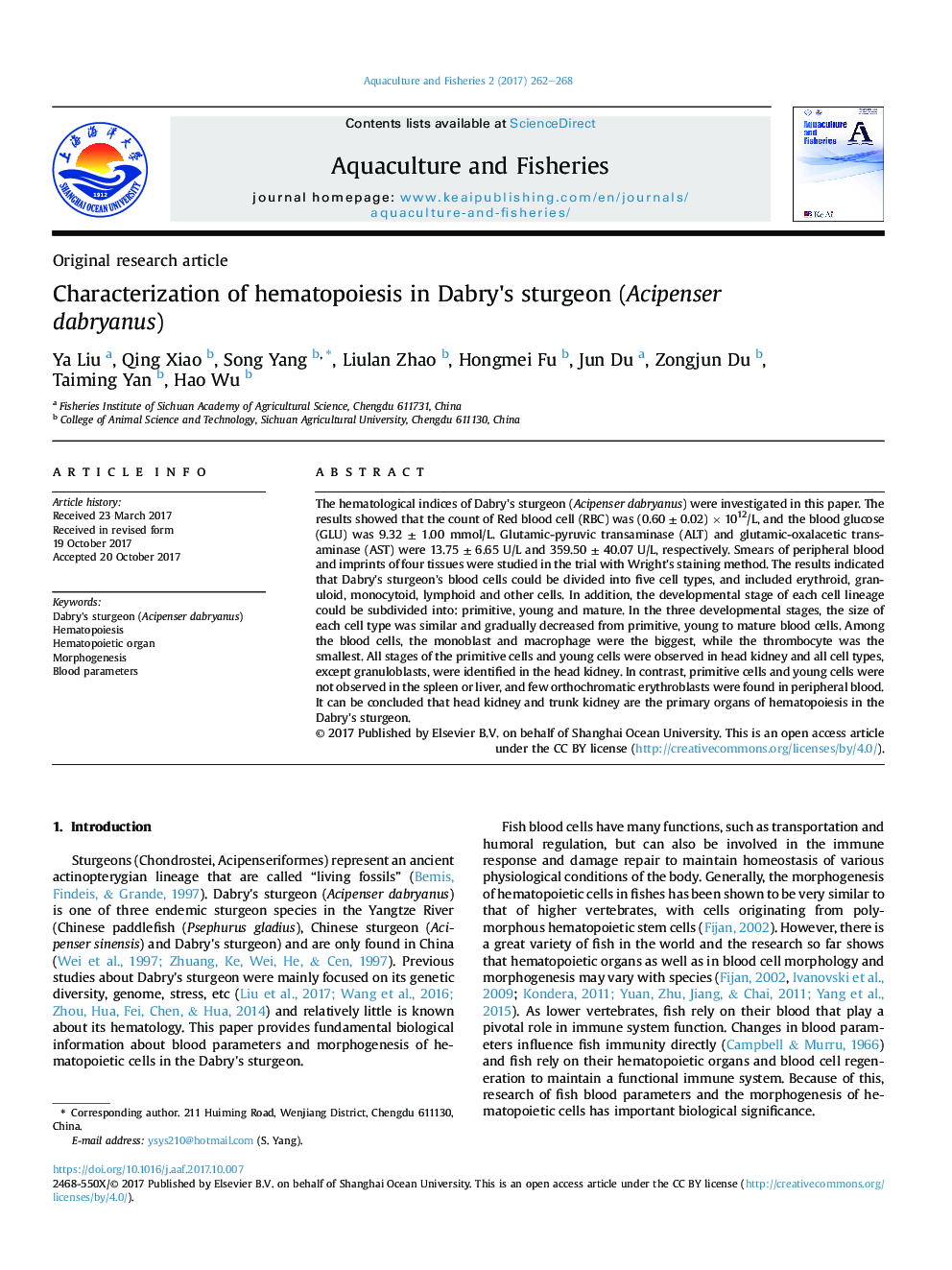| Article ID | Journal | Published Year | Pages | File Type |
|---|---|---|---|---|
| 8919997 | Aquaculture and Fisheries | 2017 | 7 Pages |
Abstract
The hematological indices of Dabry's sturgeon (Acipenser dabryanus) were investigated in this paper. The results showed that the count of Red blood cell (RBC) was (0.60 ± 0.02) Ã 1012/L, and the blood glucose (GLU) was 9.32 ± 1.00 mmol/L. Glutamic-pyruvic transaminase (ALT) and glutamic-oxalacetic transaminase (AST) were 13.75 ± 6.65 U/L and 359.50 ± 40.07 U/L, respectively. Smears of peripheral blood and imprints of four tissues were studied in the trial with Wright's staining method. The results indicated that Dabry's sturgeon's blood cells could be divided into five cell types, and included erythroid, granuloid, monocytoid, lymphoid and other cells. In addition, the developmental stage of each cell lineage could be subdivided into: primitive, young and mature. In the three developmental stages, the size of each cell type was similar and gradually decreased from primitive, young to mature blood cells. Among the blood cells, the monoblast and macrophage were the biggest, while the thrombocyte was the smallest. All stages of the primitive cells and young cells were observed in head kidney and all cell types, except granuloblasts, were identified in the head kidney. In contrast, primitive cells and young cells were not observed in the spleen or liver, and few orthochromatic erythroblasts were found in peripheral blood. It can be concluded that head kidney and trunk kidney are the primary organs of hematopoiesis in the Dabry's sturgeon.
Related Topics
Life Sciences
Agricultural and Biological Sciences
Aquatic Science
Authors
Ya Liu, Qing Xiao, Song Yang, Liulan Zhao, Hongmei Fu, Jun Du, Zongjun Du, Taiming Yan, Hao Wu,
